What is a Pyramid Patio Heater?
A pyramid patio heater is a type of outdoor heating device that helps create a warm and comfortable space while spending time outdoors. These heaters are known for their unique design, which features a tall, tapered tower with a glass tube in the center that emits radiant heat in all directions.
The heat source for a pyramid patio heater is usually propane gas or natural gas models, which is stored in a tank or connected to a gas line. The heaters are ignited with a push button or remote control, and the flame dances within the glass tube, creating a beautiful and mesmerizing visual effect.
Pyramid patio heaters are especially popular during cooler evenings, providing warmth and making outdoor spaces more comfortable. They are often used in commercial establishments such as restaurants or bars, and can also be installed in permanent fixtures in residential settings.
When looking for a pyramid patio heater, there are many things to consider – including heat output, square footage coverage, safety features, and overall design aesthetics. Look for a heater with a powerful heat output, typically measured in BTUs (British Thermal Units), that can adequately warm the desired space.
Pyramid patio heaters are often made of stainless steel and other durable materials, making them able to withstand various weather conditions. They are generally portable and can be moved easily, making them a versatile option for outdoor heating.
Overall, a pyramid patio heater is an excellent addition to any outdoor space, providing warmth and adding an attractive design element. Available in many different models and styles, there is a pyramid patio heater for everyone’s taste and needs.
How Does it Work?
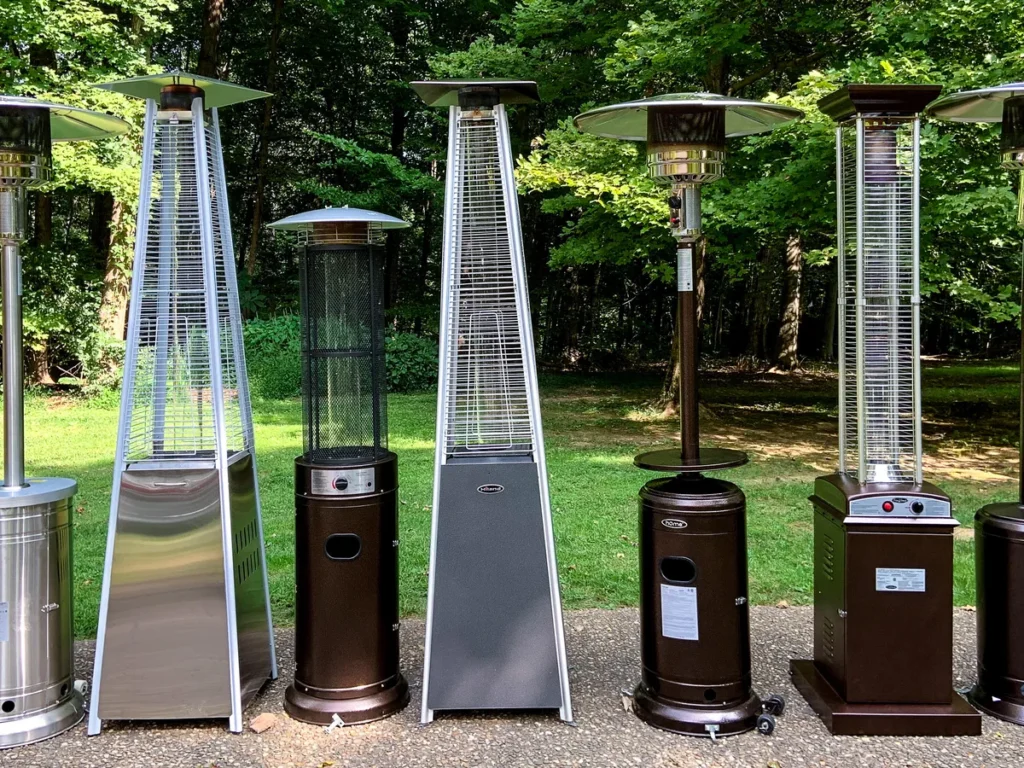
If you’ve ever wondered how a pyramid patio heater works, let’s take a closer look at its inner workings. A pyramid patio heater is a type of outdoor heating device that uses radiant heat to warm up your outdoor space.
The heat source for a pyramid patio heater is usually propane gas, although there are natural gas models available as well. The heater is connected to a gas tank or line and ignited with a push button or remote control.
Once the heater is ignited, the flame dances within a glass tube, creating a beautiful and mesmerizing visual effect that many people enjoy. The glass tube works to distribute the heat evenly across a wide area, providing warmth to those within its reach.
As the flame burns, it heats up the metal pole that supports the glass tube. The heat is then transferred from the metal pole to the surrounding area through radiation, which is why it is called a radiant heater.
Pyramid patio heaters are designed to be both functional and aesthetically pleasing. They usually have a pyramid-style shape with a sleek and modern design that complements any outdoor decor.
When considering which pyramid patio heater to purchase, it’s important to look for a model with a powerful heat output that can adequately warm the desired space. Heat output is typically measured in BTUs (British Thermal Units), so make sure to check the unit’s specifications before making a purchase.
In addition to heat output, safety features and durability are also important factors to consider. Look for a heater with safety shut-off features in case the flame extinguishes accidentally. Durable materials such as stainless steel will ensure that your patio heater can withstand various weather conditions and last for years to come.
Overall, a pyramid patio heater is a great way to enhance your outdoor space and keep it warm during cooler evenings. With its sleek design and powerful heat output, it’s no wonder why they are becoming increasingly popular for both residential and commercial use.
Benefits of Using a Pyramid Patio Heater
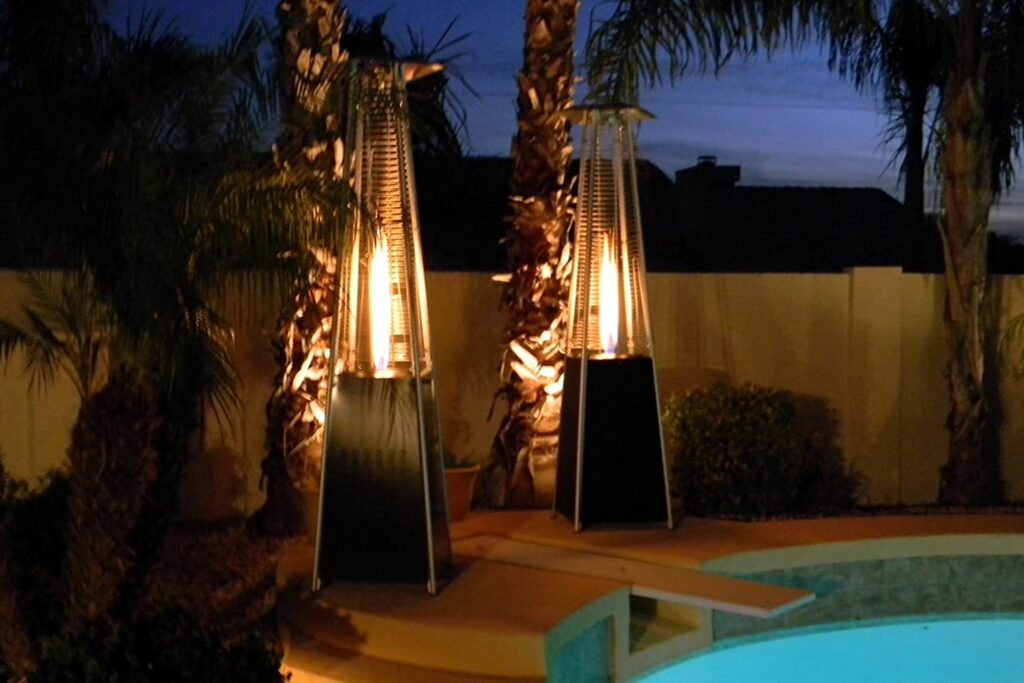
With the ongoing coronavirus pandemic, many people are looking for ways to safely enjoy the outdoors during cooler evenings. One solution is to invest in a pyramid patio heater, which offers many benefits beyond just providing warmth.
First and foremost, a pyramid patio heater can extend the use of your outdoor space during the colder months. Whether you have a backyard, a patio, or a deck, a pyramid heater can provide the necessary warmth to enjoy the space for longer periods of time.
Pyramid patio heaters are also incredibly versatile. They can be used for outdoor dining, entertaining guests, or simply relaxing outside after a long day. Unlike permanent fixtures like fire pits or outdoor fireplaces, pyramid heaters are easily moveable and can be placed anywhere you need them.
Another benefit of a pyramid patio heater is the radiant heat that it provides. Radiant heat warms objects directly instead of just heating up the surrounding air, which means you can feel warm even if there is a breeze blowing. This is particularly helpful for those living in windy areas.
Additionally, pyramid patio heaters offer a visually pleasing aesthetic with their modern pyramid style and dancing flame. They can add a touch of ambiance to any outdoor space, making it feel cozy and inviting.
When considering purchasing a pyramid patio heater, be sure to look for safety features such as an automatic shut-off switch and durable materials like stainless steel that can withstand various weather conditions.
In conclusion, a pyramid patio heater is an excellent investment for anyone looking to enjoy the outdoors year-round. Not only does it provide warmth and versatility, but it also adds aesthetic appeal to any outdoor space.
Types of Pyramid Patio Heaters
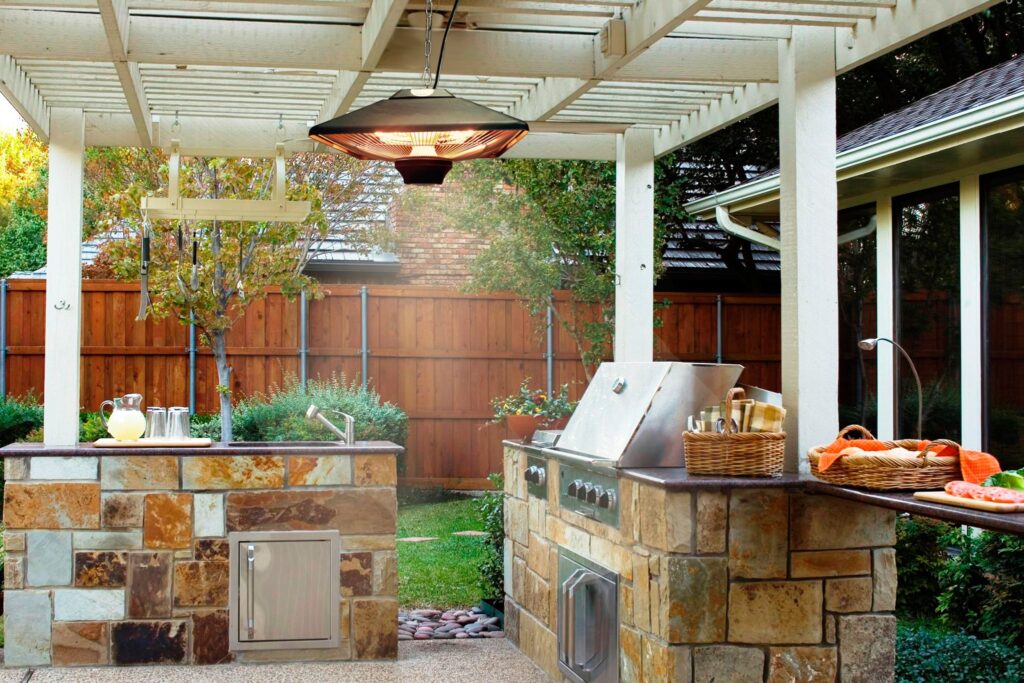
Pyramid patio heaters are a perfect addition to any outdoor space, as they provide warmth and ambiance while also being visually stunning. They come in a variety of types, each with its own unique features and benefits. In this article, we will explore some of the different types of pyramid patio heaters available on the market.
1. Gas-powered pyramid patio heaters:
The first and most popular type of pyramid patio heater is the gas-powered model. These heaters utilize propane gas tanks to produce heat that is dispersed through the unit’s quartz glass tube. Gas-powered pyramid heaters are perfect for large outdoor spaces, as they generate a lot of heat and can warm up square footage quickly.
2. Electric pyramid patio heaters:
Electric pyramid patio heaters use electricity to generate heat. They are powered by electrical outlets, making them more convenient and easier to use. Electric heaters are also safer than gas-powered models, as there is no risk of gas leaks or fires. These heaters tend to be more suitable for smaller outdoor spaces that require less heat.
3. Natural gas-powered pyramid patio heaters:
Natural gas-powered pyramid heaters are similar to gas-powered models, but they use natural gas instead of propane. They are more environmentally friendly, as natural gas is a cleaner-burning fuel. While these heaters are less common than propane-powered models, they are still a great option for anyone looking for a more eco-friendly heating solution.
4. Wood-burning pyramid patio heaters:
Wood-burning pyramid heaters are a traditional option that uses wood logs to produce heat. These heaters add a rustic touch to any outdoor space and are perfect for those who enjoy the sounds and smells of a wood-burning fire. However, they require more maintenance and are less convenient than gas or electric models.
In conclusion, there are several types of pyramid patio heaters available on the market. The type you choose will depend on your personal preferences and the size of your outdoor space. Whether you opt for gas-powered, electric, natural gas, or wood-burning, a pyramid patio heater is an excellent investment that will keep you warm and cozy during cooler evenings.
Heat Output
Heat output is one of the most important factors to consider when choosing a pyramid patio heater. Essentially, it refers to the amount of heat that the heater can produce, and it’s typically measured in BTUs (British Thermal Units). The higher the BTU rating, the more heat the heater can generate.
When selecting a pyramid heater, it’s important to consider the size of your outdoor space. If you have a large patio or outdoor area, you’ll likely need a heater with a higher heat output to ensure that it can effectively warm up the entire area. On the other hand, if you have a smaller space, a heater with a lower BTU rating may be enough to keep you comfortable.
Another thing to consider is the type of fuel that the heater uses. Gas-powered pyramid heaters tend to have higher BTU ratings than electric models, and they are often the preferred choice for larger outdoor spaces. However, electric heaters can still provide ample heat for smaller areas, and they are generally considered to be more energy-efficient.
It’s also important to note that the heat output of a pyramid heater can vary depending on factors such as weather conditions and wind speed. On cooler evenings or during the winter months, you may need a heater with a higher BTU rating to compensate for the cooler temperatures. Additionally, if you live in a windy area, you may need to select a pyramid heater with a higher heat output to offset any heat loss due to wind speed.
Overall, when selecting a pyramid patio heater, it’s important to consider the heat output along with other factors such as safety features, fuel type, and design. By choosing a heater with an appropriate BTU rating for your outdoor space, you can enjoy warm and comfortable evenings on your patio or deck regardless of the weather conditions.
Propane or Natural Gas Models

Propane and natural gas are two of the most common fuel types used in outdoor patio heaters, including those with a pyramid-style design. Both types of heaters have their advantages and drawbacks, and it’s important to consider your specific needs and preferences before deciding which one to go with.
Propane-powered patio heaters are a popular choice for many people due to their convenience and portability. Propane tanks are readily available at most hardware stores and can be easily replaced when they run out. Propane heaters are also known for their high heat output, making them ideal for larger outdoor spaces or patio areas that are exposed to colder temperatures.
Another advantage of propane heaters is that they are easy to use and can be ignited with the push of a button. However, it’s important to note that propane tanks need to be carefully stored and handled to ensure safety. They are also not as energy-efficient as natural gas heaters, which may not make them the best choice for those looking to minimize their energy costs.
On the other hand, natural gas models are a popular choice for those who want a permanent outdoor heating solution. These types of heaters are typically installed by a professional and are connected directly to a natural gas line. Natural gas heaters are considered to be very energy-efficient and can provide a consistent heat output for longer periods of time.
One of the main advantages of natural gas heaters is that they don’t require a fuel source to be constantly replenished, making them a more cost-effective option in the long run. Additionally, natural gas models are potentially safer than propane heaters, as there is no need to handle and store propane tanks, which can be a fire hazard.
Ultimately, the decision to go with a propane or natural gas model will depend on your individual needs and preferences. Propane heaters may be more convenient for those who want a portable option, while natural gas models may be more suitable for those who want a permanent outdoor heating solution. No matter which one you choose, be sure to follow the safety guidelines for your specific heater to ensure a safe and enjoyable outdoor experience.
Electric or Infrared Heaters
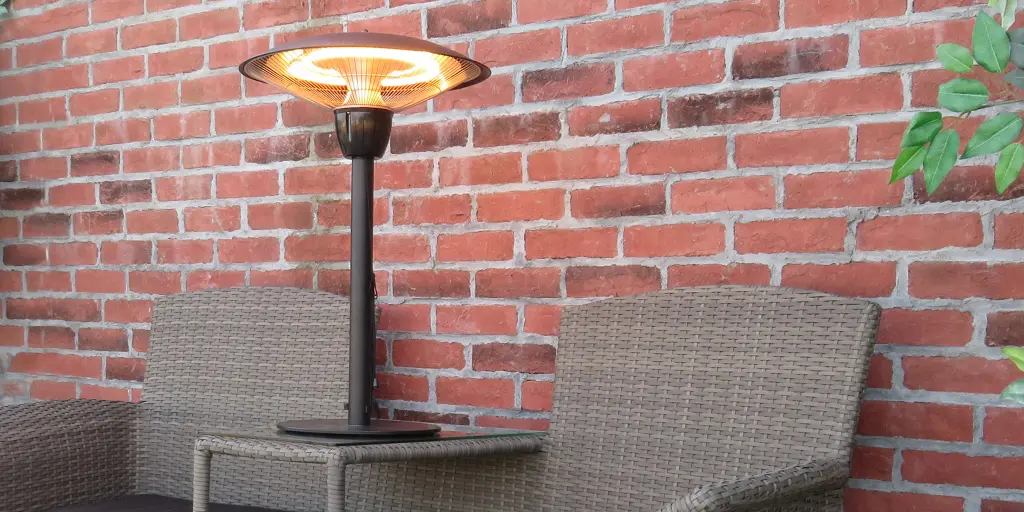
Electric or infrared heaters are popular choices for those who want a more energy-efficient and eco-friendly option for outdoor heating. Unlike propane or natural gas heaters, electric heaters don’t require any kind of combustible fuel to produce heat. Instead, they use electricity to power heating elements that generate warmth.
One of the primary benefits of electric heaters is that they are easy to install and use. They don’t require any special setup or maintenance, and they can be plugged into any standard electrical outlet. Additionally, electric heaters can be controlled with a simple on/off switch, making them perfect for those who want a hassle-free heating solution.
Another advantage of using electric heaters is that they are relatively cheap to operate. Electric heaters convert almost all the energy they consume into heat, which means they are much more energy-efficient than propane or natural gas heaters. This can result in significant cost savings over time, especially if you use your patio or outdoor space frequently.
Infrared heaters, which use infrared radiation to produce heat, are another popular option for outdoor heating. These heaters are designed to emit radiant heat that warms objects and people directly, rather than heating the air around them. This type of heating is considered to be more efficient than traditional radiant heaters, as it can deliver heat with less energy.
Infrared heaters are also known for their quick heating time and their ability to provide focused, targeted heat. This makes them ideal for use in outdoor spaces where people may be gathered in specific areas, such as around a dining table or sitting area.
Whether you choose electric or infrared heaters for your outdoor space, it’s important to consider safety features and proper maintenance. Always follow the manufacturer’s instructions for installation and use, and be sure to keep heaters away from flammable objects or materials. With the right precautions and care, electric or infrared heaters can provide a comfortable and cost-effective way to keep your outdoor space warm and inviting even on cooler evenings.
Safety Features

When it comes to outdoor heaters, safety should always be a top priority. Whether you’re using an electric patio heater or a propane-powered pyramid flame heater, it’s essential to choose a heater with plenty of safety features to protect you and your loved ones.
One crucial safety feature to look for is an automatic shut-off switch. This feature is designed to turn off the heater if it tips over or if there’s a sudden loss of fuel or power. By cutting off the heat source, an automatic shut-off switch can help prevent fires and other accidents.
Another essential safety feature to consider is a safety grill or cage. This is especially important for heaters that use an open flame, such as propane or natural gas models. A safety grill or cage can prevent accidental contact with the flame and help prevent burns or other injuries.
Many modern outdoor heaters also come equipped with safety sensors, which can detect if the heater is experiencing any issues, such as overheating or gas leaks. These sensors can alert users to potential dangers and help prevent accidents or injuries.
Finally, it’s crucial to choose an outdoor heater that is designed for outdoor use. Indoor space heaters aren’t suitable for outdoor use, as they can produce harmful carbon monoxide and other gases that can be dangerous if they build up in an enclosed space. Look for heaters that are explicitly designed for use in outdoor environments, and always follow the manufacturer’s instructions for safe operation.
In conclusion, when it comes to outdoor heaters, safety is paramount. Look for heaters with automatic shut-off switches, safety grills or cages, and safety sensors, and always choose models that are designed for outdoor use. By taking these precautions, you can enjoy the warmth and comfort of your outdoor space without putting yourself or your loved ones at risk.
Square Feet Coverage Area
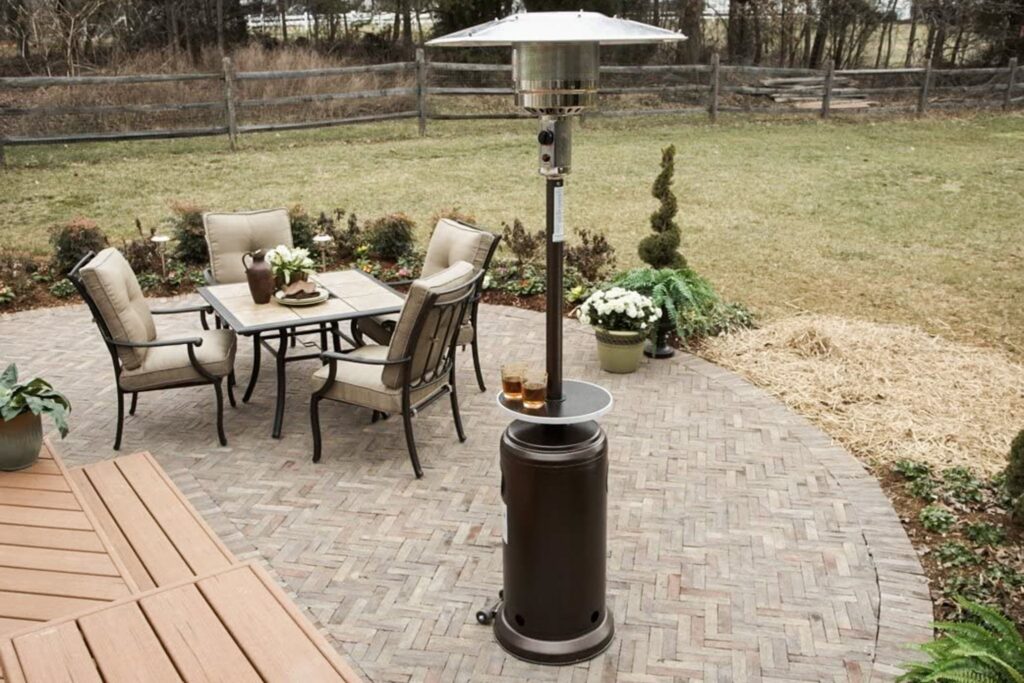
When it comes to choosing an outdoor heater, one of the critical factors that you need to consider is its heat output and coverage area. Square feet coverage area refers to the amount of space that the heater can effectively heat up and keep warm. This factor is generally determined by the type of heater and its power output.
The first step in determining the coverage area of an outdoor heater is to identify its heat source. There are several types of outdoor heaters available, including propane, natural gas, electric, and wood-burning models. Each of these heaters has its unique heating mechanism that affects its coverage area.
For example, a propane-powered patio heater uses a propane tank as its fuel source and produces heat by burning the gas through a quartz glass tube or ceramic element. Pyramid-style heaters, which use a glass tube to produce a flame, are also a popular choice for outdoor heating. These heaters typically have a larger coverage area, often spanning up to 200 square feet.
Electric patio heaters, on the other hand, use infrared technology to produce heat. These heaters are generally more energy-efficient than propane or natural gas models, but also have a smaller coverage area, with most models designed to heat up to 150 square feet.
Another critical factor to consider when determining the coverage area of an outdoor heater is its power output, measured in British Thermal Units (BTUs). Higher BTUs typically correspond to a larger coverage area. For example, a 46,000 BTU Avanti propane heater can heat up to 220 square feet, while a more compact 10,000 BTU tabletop patio heater may only heat up to 50 square feet.
When selecting an outdoor heater based on its coverage area, consider the size of your outdoor space. If you have a larger backyard or patio area, you may need one or more heaters with wider coverage options. If you have a smaller balcony or outdoor seating area, a more compact heater may suffice.
In conclusion, the coverage area is an essential factor to consider when choosing an outdoor heater. Take into account the heat source, power output, and size of your outdoor space to select the right heater that fits your heating needs. By considering all these factors, you can enjoy your outdoor space during the cooler evenings while staying warm and comfortable.
Quartz Glass Tube Technology
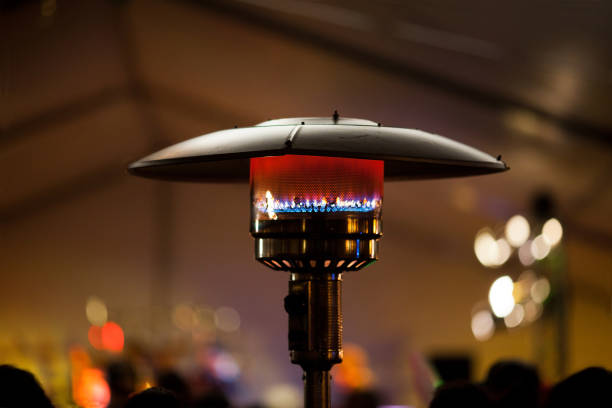
Quartz glass tube technology has become increasingly popular in outdoor heating devices, specifically in pyramid-style patio heaters. This type of technology provides radiant heat that is produced by the burning of propane or natural gas through a quartz glass tube.
Quartz glass has a high resistance to high temperatures and thermal shock. This means that it can withstand the rapid expansion and contraction that occurs when hot gases pass through it.
In pyramid-style patio heaters, the quartz glass tube not only provides radiant heat but also acts as a decorative element. The flame produced by the gas as it burns through the tube creates a mesmerizing effect, resembling a dancing flame.
One of the benefits of using quartz glass tube technology is that it provides a more even distribution of heat. The heat is dispersed evenly across the coverage area, ensuring that all parts of the outdoor space are heated evenly.
Furthermore, the use of quartz glass tubes in patio heaters is also beneficial in terms of safety. The glass tube is enclosed in a protective casing, preventing people from coming into contact with the hot surface. Additionally, some patio heaters come equipped with safety features, such as automatic shut-off mechanisms that trigger when the heater tips over.
Overall, quartz glass tube technology has revolutionized the outdoor heating industry by providing an efficient and safe means of heating outdoor spaces. Whether you are looking to heat a large patio area or a smaller balcony, a pyramid-style patio heater equipped with a quartz glass tube is an excellent option to consider.
Advantages of Pyramid Patio Heaters Over Other Types of Outdoor Heating Solutions
Pyramid patio heaters have gained immense popularity in recent years as a preferred outdoor heating option. This sleek and stylish heater not only looks great in any outdoor space but also provides a range of advantages over other types of outdoor heating solutions.
One of the biggest advantages of a pyramid-style patio heater is its heating capacity. These heaters are incredibly powerful and can cover a large area with ease. Unlike other outdoor heating solutions like wood-burning patio heaters, which may require a long time to warm up, pyramid patio heaters ignite instantly providing heat almost immediately. This heating capacity makes it a perfect heating solution for larger outdoor areas such as gardens or expansive patios.
Another major advantage of pyramid patio heaters is that they provide directional heating. It means that the heat is focused downwards, making the area directly under the heater significantly warmer. This feature is particularly useful during the cooler evenings in spring and autumn when there is just a slight nip in the air. The warmth generated from a pyramid patio heater allows you or your guests to comfortably enjoy your outdoor space for prolonged periods.
Pyramid patio heaters also come equipped with various safety features making them a safer option than other heating sources such as wood outdoor heaters. Many pyramid patio heaters have automatic shut-off mechanisms that trigger when the heater tips over or if the gas supply is disrupted. This ensures that you have peace of mind while using this heater to warm your outdoor space.
In addition to providing heat, the pyramid-style patio heater is visually appealing. It creates a mesmerizing effect, resembling a dancing flame, which can add to the ambiance of your outdoor space. Many of these heaters come with glass tubes that provide radiant warmth and create a beautiful glow that adds to the aesthetic of your outdoor space.
Lastly, pyramid patio heaters are easy to install and maintain. They require little assembly, and maintenance typically takes only a few minutes. All that is required is regular cleaning to ensure that the heater operates at maximum efficiency.
In conclusion, the advantages of using a pyramid-style patio heater for outdoor heating solutions are numerous. Their heating capacity, directional heat, safety features, visual appeal, and easy installation make them an ideal choice for anyone looking to warm their outdoor space effectively and stylishly. Whether you’re hosting a large gathering or cozying up with a book on a chilly evening, the pyramid patio heater is a must-have outdoor heating solution.
Heat Source: Propane Tank or Natural Gas Line Connection
When it comes to outdoor heating solutions, there are two primary heat source options to choose from: propane tanks or natural gas line connections. Each has its advantages and disadvantages, and it’s essential to understand them before making a decision.
Propane tank-powered outdoor heaters are a popular choice, primarily because they’re portable. You can easily move and position them to where they’re needed, making them perfect for outdoor events or areas where there’s no natural gas connection. Propane tanks are widely available and relatively affordable, making them a convenient option for many homeowners.
However, there are a few downsides to using a propane tank. First, you’ll need to monitor the propane levels to ensure that you don’t run out of fuel in the middle of an event or chilly evening. Additionally, you’ll need to replace the propane tank regularly, which can add up in cost over time.
In contrast, natural gas line connections offer a reliable, steady source of heat with no need to worry about running out of fuel. When connected to natural gas, outdoor heaters are a permanent fixture and require much less maintenance than propane tank-powered heaters. Natural gas is also more affordable than propane in many areas, making it a cost-effective option over time.
However, there are a few drawbacks to using natural gas. The major downside is that you’ll need to have a natural gas line connection installed, which can be costly and time-consuming. Natural gas heating options are also less portable than propane tank heaters, limiting where you can use them.
Ultimately, the choice between propane tank heaters and natural gas line connections comes down to personal preference, budget, and convenience. If you prioritize portability and affordability, propane powered heaters are the way to go. However, if you want a more permanent heating solution with less maintenance, a natural gas connection may be the better choice. Whichever option you choose, make sure to select a heater that meets the heat output requirements for your outdoor space, keeping you cozy and warm all year round.
Heat Output and Range of Temperature Settings
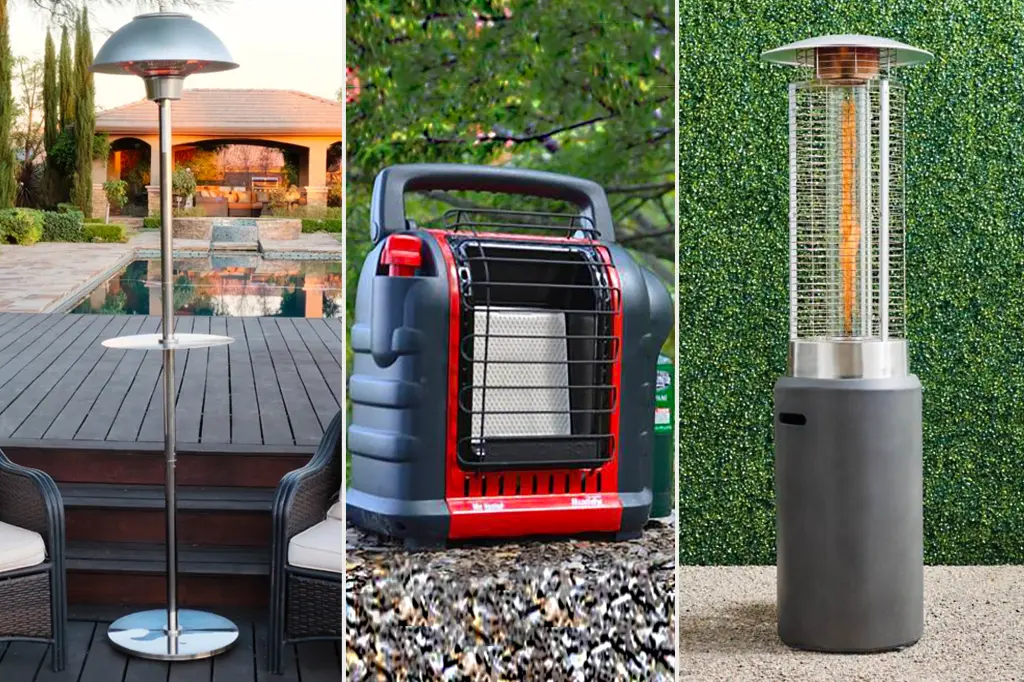
When choosing an outdoor heater, one of the most important factors to consider is the heat output. This refers to the amount of heat the heater emits, typically measured in British Thermal Units (BTUs). Depending on the size of the outdoor space you’re trying to heat, the heat output of your heater can make a big difference in how effectively it warms the area.
Another factor to consider is the range of temperature settings. Outdoor heaters come with different temperature settings, which allow you to adjust the heat output to suit your needs and preferences. Some heaters come with simple on/off switches, while others have multiple temperature settings that allow for more precise control.
A good rule of thumb when selecting an outdoor heater is to look for one that has a high heat output and a wide range of temperature settings. This combination will offer you the most flexibility when it comes to heating your outdoor space.
For example, if you’re looking to heat a larger space, you’ll want a heater with a high heat output to ensure that the warmth is evenly distributed throughout the area. You may also want a heater with a wider range of temperature settings to allow you to adjust the heat level based on the temperature outside and the number of people in the space.
On the other hand, if you’re looking to heat a smaller space such as a patio or balcony, a lower heat output may be more suitable. In this case, a heater with a few temperature settings should be sufficient to provide the right level of warmth.
When selecting a heater, it’s also important to consider whether you want a gas-powered heater or an electric one. Gas-powered heaters tend to have more powerful heat outputs, making them a good choice for larger outdoor spaces. Electric heaters, on the other hand, offer more precise control over the temperature settings and are often a good option for smaller spaces.
In summary, when choosing an outdoor heater, take into account the heat output and range of temperature settings to ensure that you get the right balance of warmth and flexibility for your outdoor space.
Radiant Heat vs. Convection Heat Systems
When it comes to heating systems, two main types of systems are used to heat homes and spaces – radiant heat and convection heat. Each system works in a different way and offers unique advantages and disadvantages. Understanding the differences between these two systems can help homeowners make an informed decision about the best system for their home.
Radiant heating systems work by emitting infrared radiation, which is absorbed by objects in the room, such as furniture, walls and floors. This heat is then radiated back into the room, providing a comfortable and even temperature. Radiant heat is often preferred because it does not rely on air movement to convey heat, which can help reduce the amount of allergens and dust in a space. Additionally, radiant heat offers fast and efficient heating, which makes it an ideal choice for areas that require quick and easy temperature changes.
Convection heating systems, on the other hand, work by heating the air in a space and circulating it through the room. As air is heated, it rises, creating a natural flow of warm air and circulating it through the space. Convection heat is often preferred because it provides even heating throughout the entire room. Additionally, convection heating systems offer flexible installation options, making them a great option for a variety of spaces.
One of the main differences between radiant and convection heating systems is their efficiency. Radiant heating systems are designed to heat objects directly, which means they require less energy to maintain a comfortable temperature. Convection heating systems, on the other hand, often require more energy to maintain the same temperature due to the fact that they rely on air flow to distribute heat.
Another significant difference is their installation requirements. Radiant heating systems require the installation of pipes or wires underneath flooring or within wall panels, which can be costly and time-consuming. Convection heating systems, on the other hand, are installed within the walls or floors of a space, making them a more flexible option for homeowners.
In conclusion, both radiant and convection heating systems offer unique advantages and disadvantages. Ultimately, the best system for a home depends on a variety of factors, including the size and layout of the space, energy efficiency priorities, and budget constraints. By understanding the differences between radiant and convection heating systems, homeowners can make an informed decision about which system is best suited for their specific heating needs.
Easy to Install and Use
One important factor to consider when selecting any home appliance or heating system is its ease of installation and use. Fortunately, when it comes to pyramid patio heaters, most models are designed to be simple and hassle-free to install and use.
For example, many pyramid patio heaters rely on propane tanks or natural gas connections for their heat source, which means they do not require extensive installation or wiring to function. Instead, all you need is a compatible gas tank or connection, and you’re ready to start heating your outdoor space.
In terms of assembly, many pyramid-style heaters come partially or fully assembled, which means you’ll spend less time putting the unit together and more time enjoying its warmth. Some models even include wheels or other features to make moving the heater from one location to another easier and more convenient.
When it comes to operating a pyramid patio heater, most models will come with clear instructions and controls that are simple to figure out. Many heaters have user-friendly buttons or knobs that allow you to easily adjust the heat output, and may even offer remote controls for added convenience.
Finally, it’s worth noting that many pyramid patio heaters come with important safety features and certifications that give you peace of mind when using them. For example, some models may have automatic shut-off features that turn the unit off if it overheats or tips over, while others may be certified for use in specific outdoor environments.
All in all, if you’re looking for an outdoor heating option that is easy to install and use, a pyramid patio heater is a great choice. With their simple assembly, intuitive controls, and convenient features, these heaters offer the perfect way to heat your outdoor space with minimal hassle.




